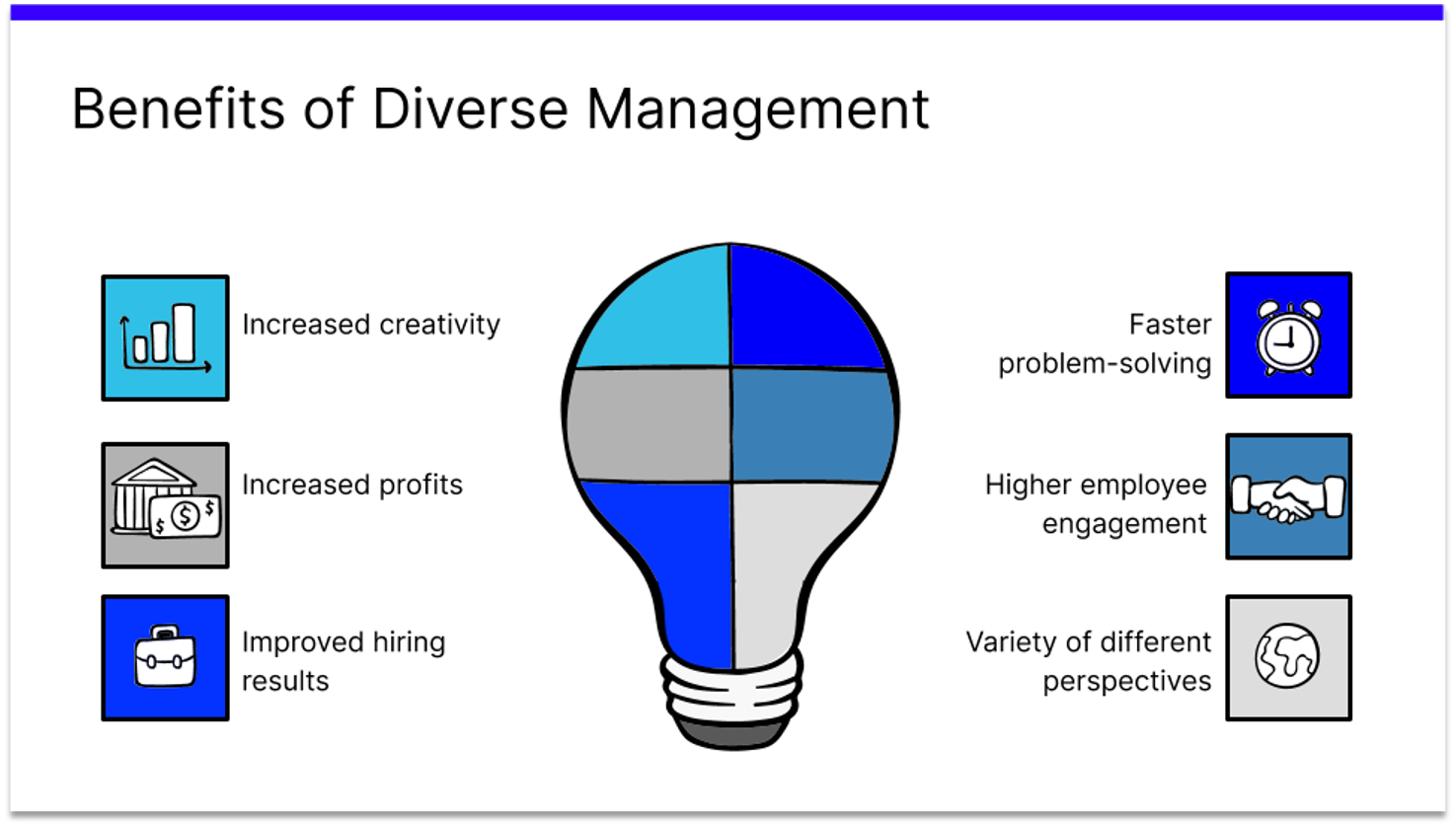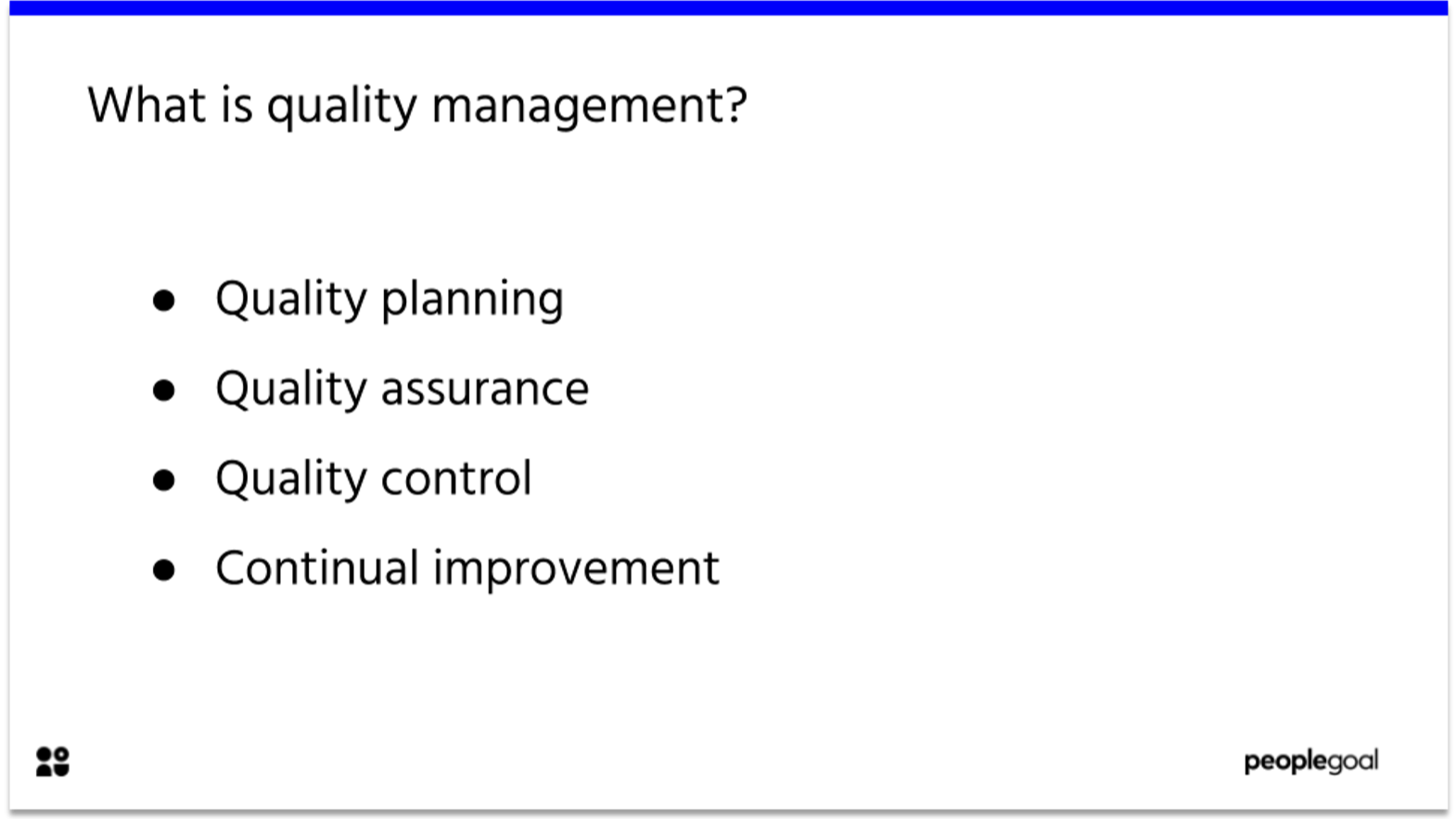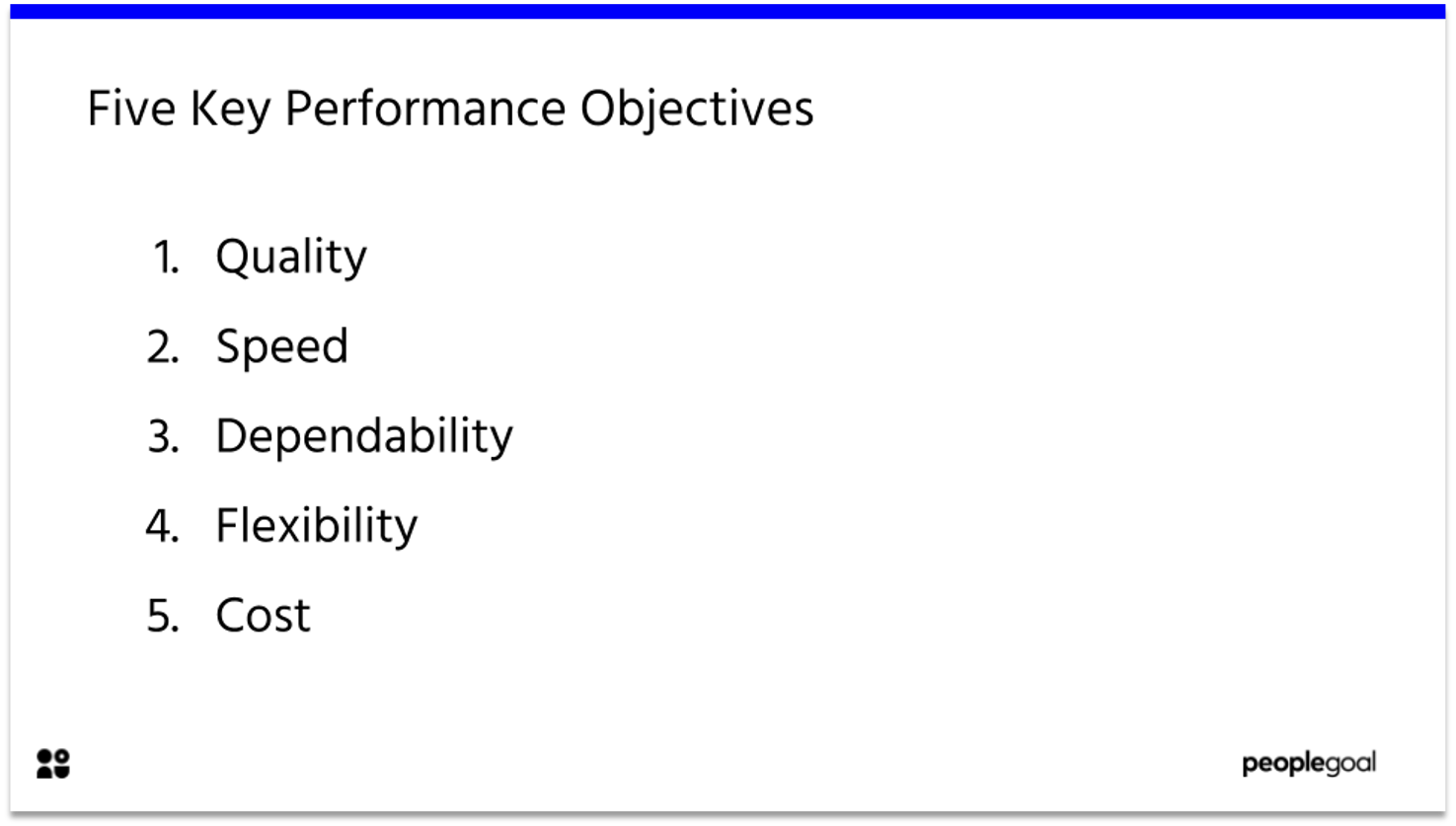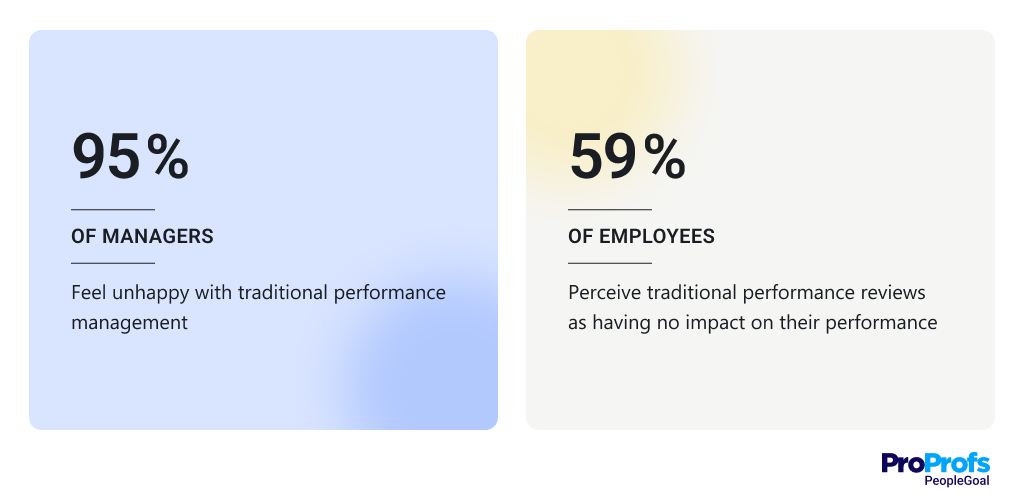Employee performance management is an amalgamation of different talent management elements such as talent strategy, learning, training and employee development. Performance management is often linked with performance appraisals and annual reviews, goal setting and day to day task management. Many HR managers will agree that in order to create an effective performance management process a continuous process should be established within an organization, which often involves implementing a performance management system. In this article we cover the different pillars of performance management which can enable effective employee management and employee development.
What is the employee performance management definition?
The dictionary definition of employee performance management is the process of managing employees and teams effectively in order to achieve business growth. The process establishes a shared understanding of the business objectives and an approach to achieve them, while managing and developing people. According to Armstrong and Baron employee performance management is:
A strategy which relates to every activity of the organization set in the context of its human resource policies, culture, style and communications systems
The 4 key pillars of performance management
One can split the employee performance management process into four main stages: Planning; Assessment; Recognition and Development.
Planning
The planning stage of the performance management process is intended to set employees achievement goals and determine the expected level of performance for a given role. Within the planning stage, managers may wish to provide the employee with a clear timeline of work completion to make sure the achievement goals are met. By the end of the planning stage, both the employee and management should know what is expected, and the given timeframe.
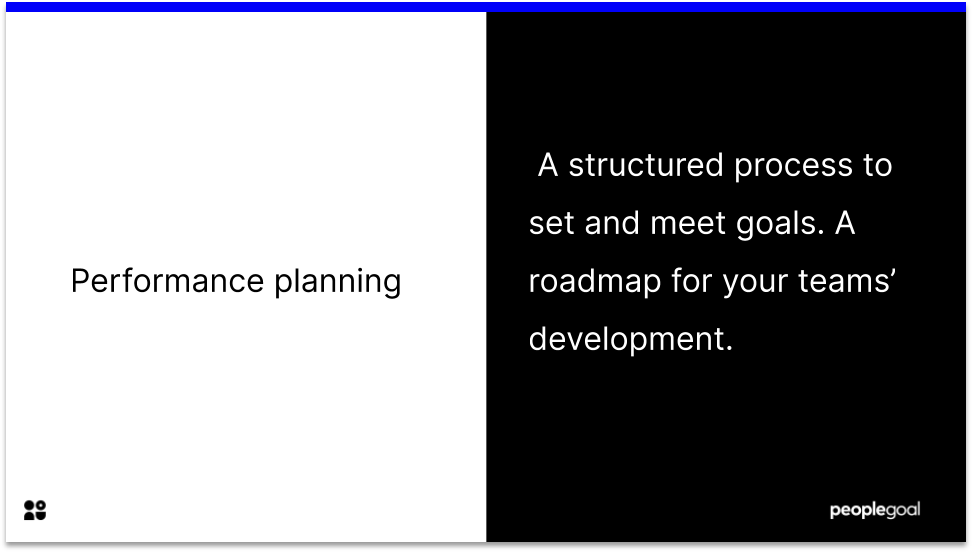
Assessment
The assessment stage constitutes an evaluation of the employees’ performance; this usually takes place annually. Evaluation is garnered from a collective number of sources: feedback from co-workers and clients; management reviews; previous years’ evaluation and skill assessments. Some organizations may have an employee complete an evaluation of their own performance before comparing it to the official evaluation.
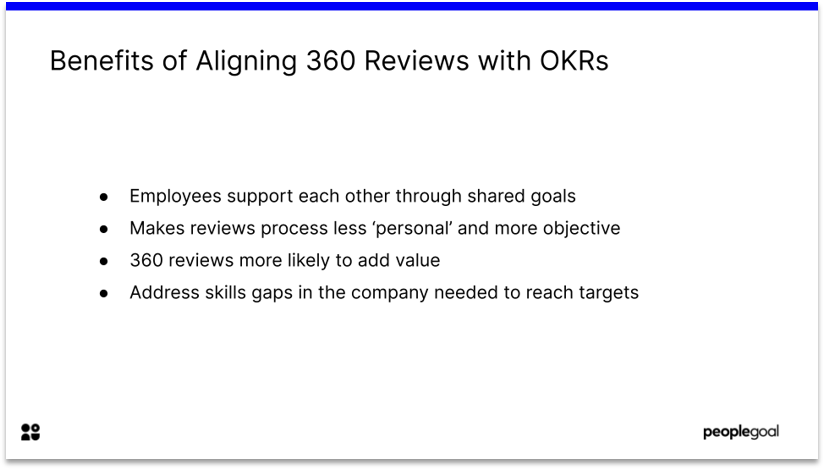
Recognition
This stage is centred around recognizing the employee’s achievements as well as areas that may need improvement. Employee recognition is an integral component of employee retention, motivation, engagement and development. During this stage, management and employees should discuss methods of improvement.
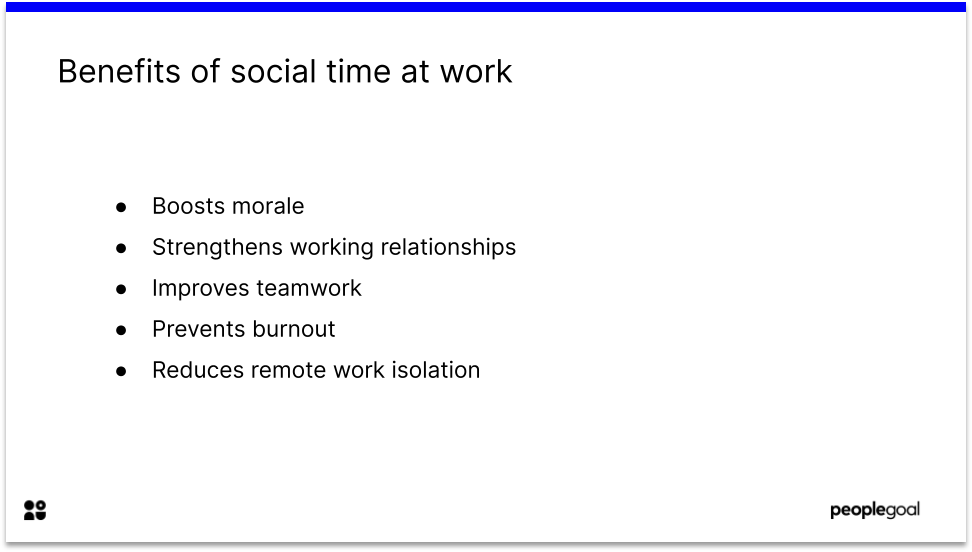
Development
Development is perhaps the most challenging stage of employee performance management. The purpose of this stage is to promote, encourage and engender further improvement and development of the employee. One method of development is training, whether it be on or off site. Other methods include coaching and/or mentoring. Regardless of the method, the desirable outcome is enhancing employee strengths, improving employee weaknesses and gearing the employee towards the organization’s needs.
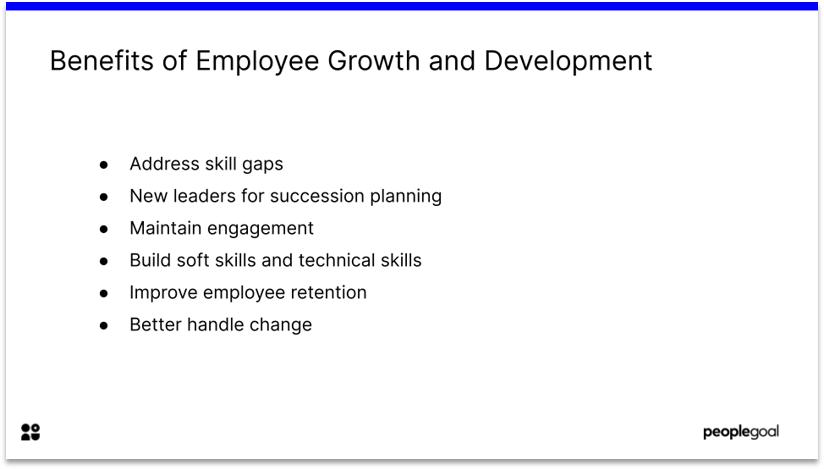
The employee performance management process should be a tool for the manager and the employee to:
- Communicate task expectations
- Discuss business objectives
- Ensure every individual is capable of delivering his/her tasks
- Provide constructive performance feedback
- Understand the impact of their actions in team and company level
The nature of employee performance management will vary from organization to organization dependent on the size of the team, the size of the organisation, how experienced employees are and where managers sit in the organisational hierarchy. Nevertheless, employee performance management should:
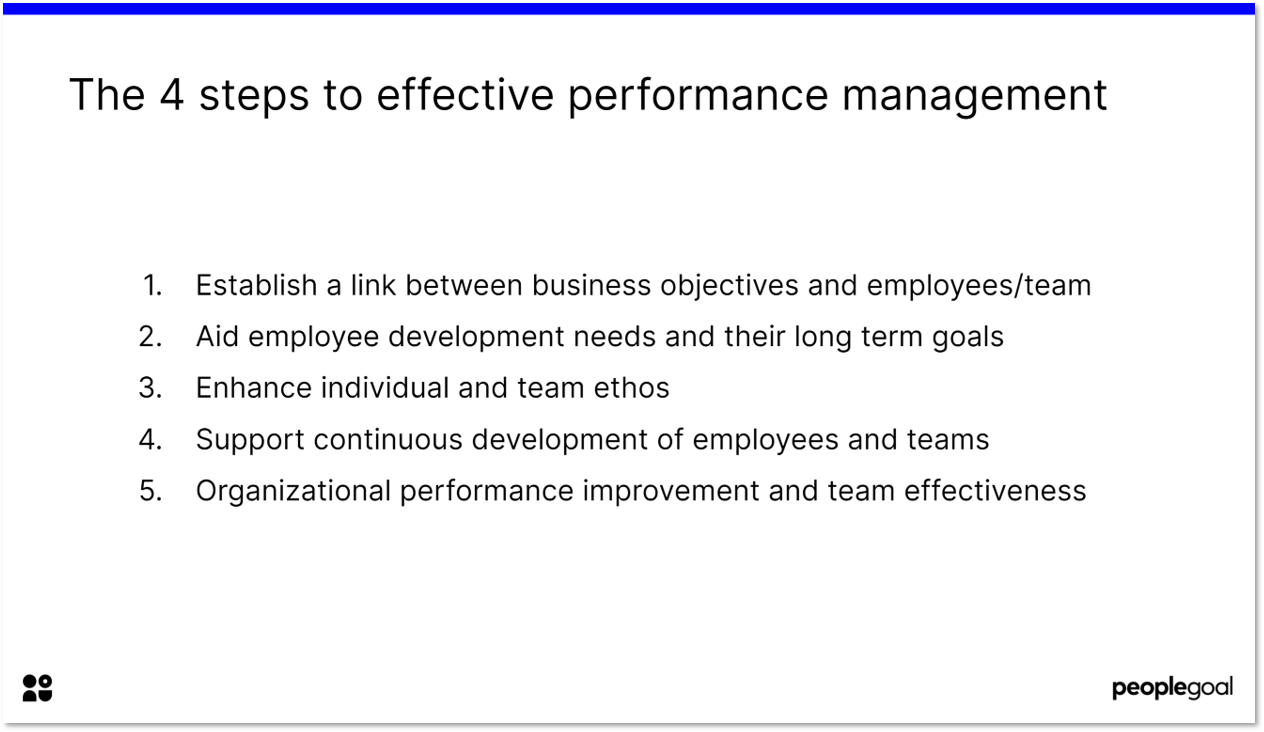
Performance management is about establishing a social environment where teams and employees support business growth using their skills. In this environment, managers are able to plan with the help of their employees. They are able to set expectations and discuss what everyone should do to exceed these expectations. The entire process should be about driving employee engagement and team growth rather than just measuring an employee’s performance.
Ready to 3x Your Teams' Performance?
Use the best performance management software to align goals, track progress, and boost employee engagement.

